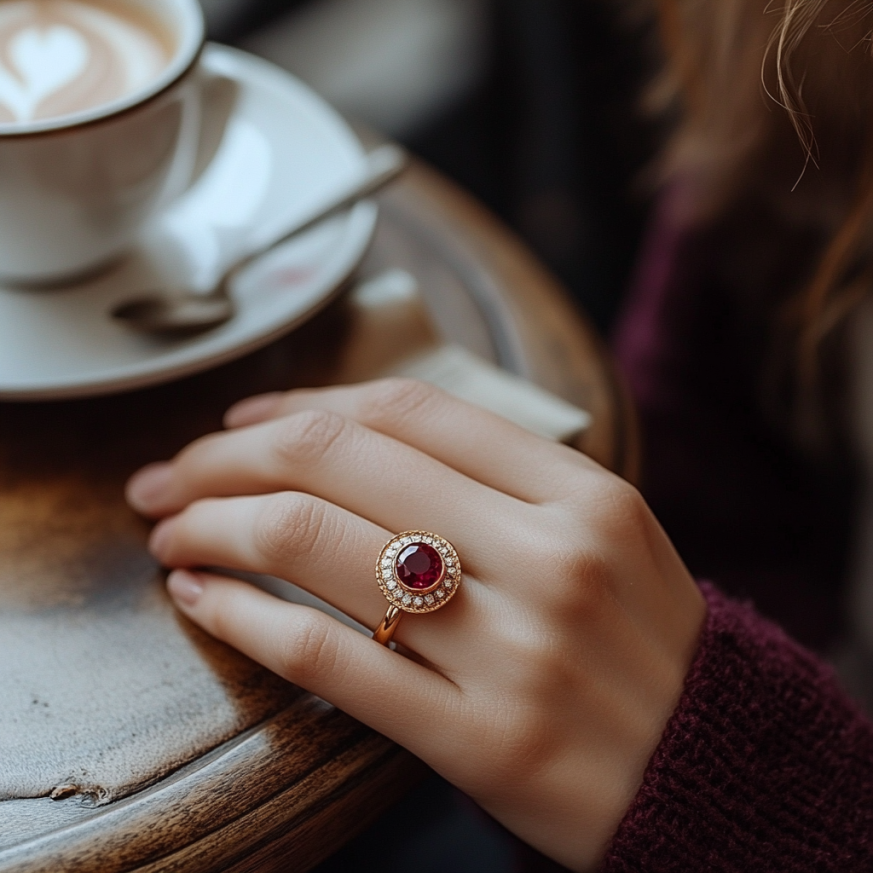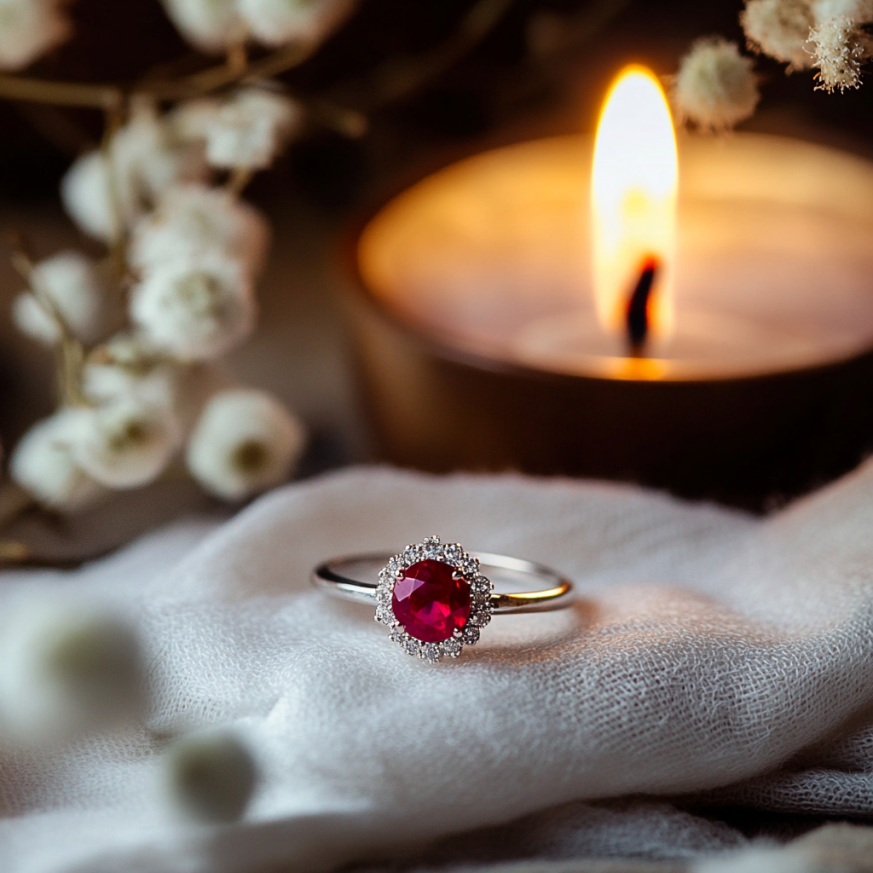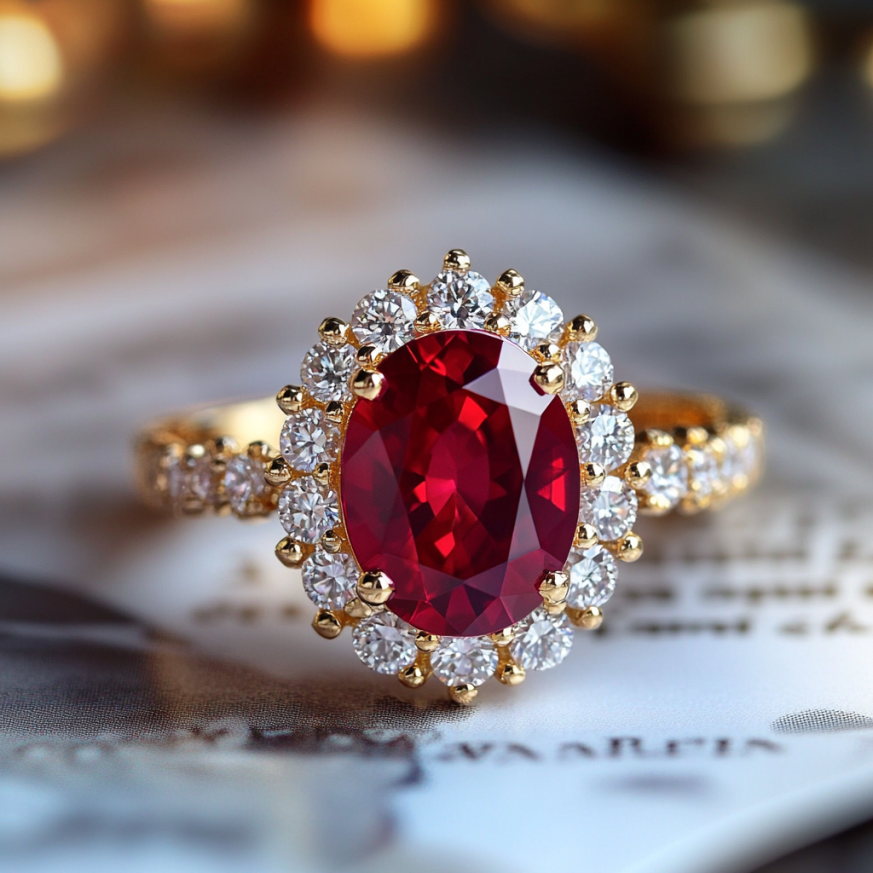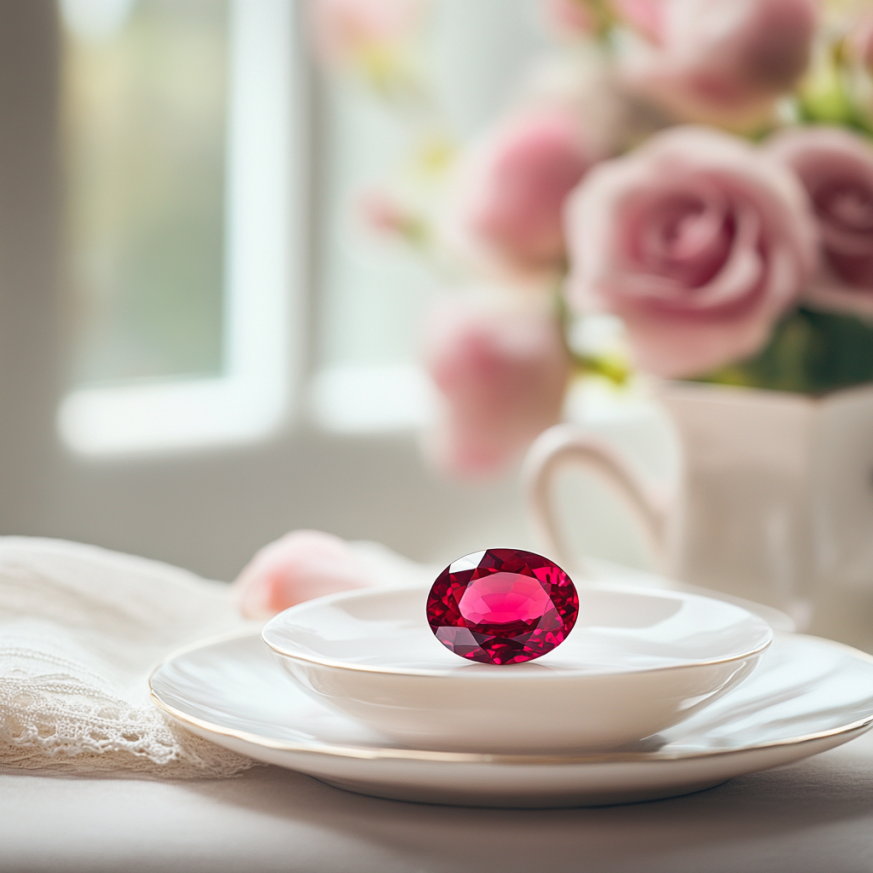Ruby Ring Daily Care
A ruby ring is a stunning piece of jewelry that requires regular maintenance to preserve its brilliance and longevity. While rubies are among the hardest gemstones, ranking 9 on the Mohs hardness scale, they can still collect dirt, develop scratches, or experience wear over time. Proper ruby ring daily care ensures that your gemstone remains vibrant and securely set for everyday wear.

1. Remove Your Ruby Ring When Necessary
Wearing a ruby ring daily exposes it to potential damage from impact, chemicals, and environmental factors. Removing your ring in certain situations helps protect both the gemstone and its setting.
Best Practices:
- Take off your ruby ring before cleaning, cooking, or using chemicals.
- Remove it before exercise, gardening, or heavy lifting to prevent accidental knocks.
- Avoid wearing your ring in hot tubs, pools, or saunas, as chlorine and heat may affect certain treatments.

2. Clean Your Ruby Ring Regularly
Daily exposure to body oils, lotions, and dirt can dull the shine of a ruby. A quick, gentle cleaning routine helps maintain its brilliance.
Best Practices:
- Wipe your ruby ring with a soft, lint-free cloth at the end of the day to remove fingerprints and oil buildup.
- Once a week, clean your ring with warm water, mild soap, and a soft toothbrush to remove deeper dirt.
- Rinse thoroughly and dry with a clean cloth before storing or wearing again.
Avoid:
- Using abrasive cleaners, toothpaste, or baking soda, as these can scratch the ruby’s surface.
- Harsh scrubbing, which may loosen the setting over time.
3. Protect the Setting from Damage
A ruby ring’s setting plays a crucial role in protecting the gemstone. Loose prongs or worn-out settings can cause the ruby to fall out.
Best Practices:
- Inspect the prongs and setting weekly for any signs of looseness.
- Visit a jeweler every 3–6 months for a professional check-up and tightening if needed.
- If you notice a ruby shifting in its setting, stop wearing the ring until it is repaired.

4. Store Your Ruby Ring Properly
When not wearing your ruby ring, store it in a safe place to avoid scratches and dust buildup.
Best Practices:
- Keep the ring in a soft-lined jewelry box or fabric pouch.
- Store it separately from diamonds or other rubies to prevent scratches.
- Avoid leaving your ruby ring in humid places like bathrooms, where moisture can affect metal settings.
5. Be Mindful of Treated Rubies
Some rubies undergo heat treatment, fracture filling, or oiling to enhance their color and clarity. Treated rubies require extra care.
Best Practices:
- Avoid ultrasonic and steam cleaners, as they can damage treated rubies.
- Keep treated rubies away from extreme heat and chemicals to prevent deterioration.
- If uncertain whether your ruby is treated, have it checked by a gemologist.
R12350| play |medium | middle| “8.01 Ct. Ruby from Mozambique”
6. Professional Cleaning and Maintenance
Even with regular home care, a ruby ring benefits from professional cleaning and inspection to maintain its best condition.
Best Practices:
- Schedule a professional cleaning once a year to remove deep-seated dirt and restore brilliance.
- Have the ring’s setting checked and tightened periodically.
- If the metal band becomes scratched or dull, consider professional polishing.

Conclusion
Following a ruby ring daily care routine keeps your gemstone radiant and well-protected. With proper cleaning, mindful wear, and secure storage, your ruby ring will remain a timeless piece of jewelry for years to come.
For more details, visit Wearing Ruby Jewelry Safely to learn how to enjoy your ruby pieces without risking damage.
